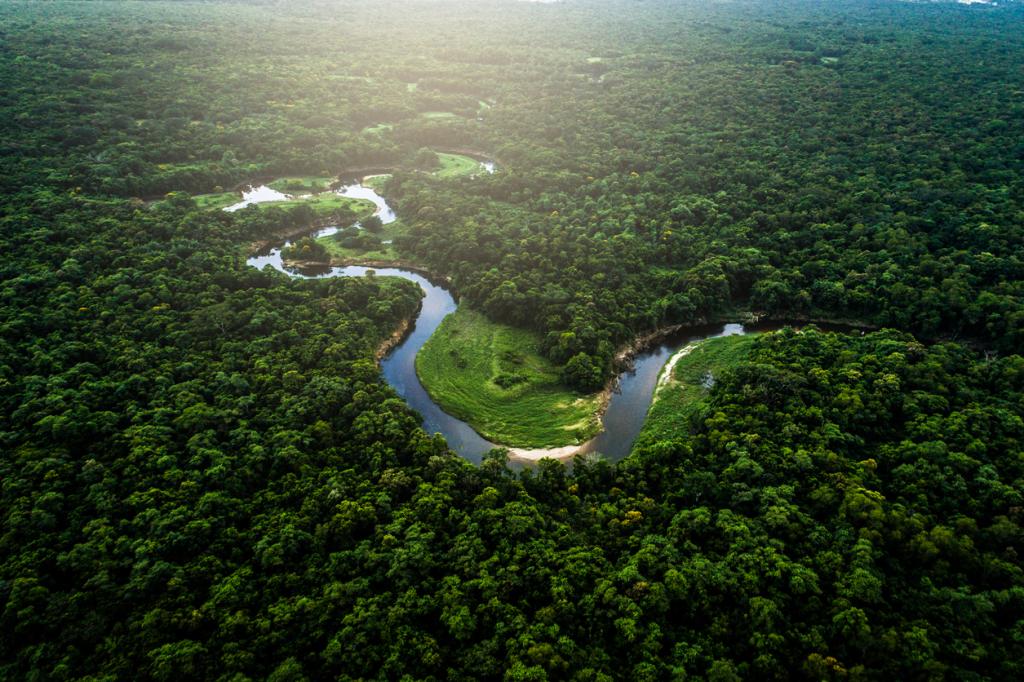Professor Hecht has contributed a chapter to “The Routledge Companion to the Environmental Humanities”. Articulating the significance of humanistic perspectives for our collective social engagement with ecological crises, this volume provides insight into exciting new directions for future scholarship. In her contribution, “Domestication, Domesticated Landscapes, and Tropical Natures”, Susanna Hecht explores how competing models of domestication and human impact are currently playing out in debates over indigenous “footprints” in the Amazonian basin in pre-Colombian times.
Professor Hecht brings into question the “scientific” practices that have framed epistemological questions on how certain landscapes are perceived as “wild” and devoid of culture. She uses her training as a soil scientist as well as political ecology or “applied environmental history” approaches which she has pioneered in her larger work. Her findings have many crucial implications. First, they challenge certain deterministic viewpoints that posit indigenous Amazonian communities as lacking the productive basis to sustain complex “culture”. Such narratives of anthropogenic domestication are politically very important because of their constitutional ties with rights over territory or with intellectual property rights over germplasm for instance, and more broadly because of their impact on common property, cultural recognition and sociocultural developments. Second, her findings on the use of soil management as a form of agricultural technology that could have allowed productive agriculture to provision large and complex societies open up prospects for a sustainable soil and land-use management.
Professor Hecht’s entry point in many of her works, including this book chapter, is through issues and concerns around deforestation. Her research experience as a soil scientist working with the Kayapo Amazonian community was an opportunity to go beyond dominant and narrow scientific practices that have gained authoritative status, and instead broaden the horizon by bringing together a diverse range of natural sciences, local knowledge systems, archaeology, ethnohistory, ethnobiology and ethnography. She contextualises various dominant agricultural models. Among those, some seek to privilege the prevalence of certain types of agricultural technology and practice as harbingers of complex civilisation and cultural capacity, and consider the lack of such agriculture to be a sign that complex cultural and anthropogenic activity over these lands was not possible.
This approach is premised on viewing Amazon landscapes as “pristine”, which has been called a myth by an opposing school of thought. Professor Hecht summarises these two opposing approaches, echoed today by recent capital-driven interests under the umbrella terms “Neo-Meggersians” (after the Smithsonian-based functionalist ecologist Betty Meggers) and “Denevan School”. Neo-Meggersians have a reductive and limited conceptualisation of what counts as legitimate domesticated landscapes, which must involve fire-based agriculture, specific crop types and charcoal signatures. This means that only certain types of biophysical “scientific” data are used to produce a narrative of whether land was productively occupied by indigenous communities. By denying that productive agriculture could sustain complex societies on otherwise non arable land, the deterministic trope of “pristineness” or “wilderness” can be endorsed. The Amazon could therefore be posited as a place devoid of culture and of the capacity to produce it and exert an appreciable human impact on the environment. This approach entails negative implications for the territorial and intellectual property rights of indigenous communities because it delegitimises these communities as having possessed the rights over the lands or indigenous germplasm technology and materials. As professor Hecht points out, most of the data that has driven the Neo-Meggersian arguments come from two laboratories, respectively of the Smithsonian Institution and the Florida Institute of Technology, and are based on very small samples from a mere 55 sites and 245 soil cores that cannot possibly account for the entire Amazon. Such an approach basically implies that culture can be understood without actual reference to it, merely through soil chemistry, starch grains, phytoliths and other such biophysical data. It also obscures the fact that scientists have historically played an important role in colonial era development interventions, particularly in tropical ecologies.
The other school of thought is that of the “possibilists”, or “Denevan School”, who have identified alternative modes of engineering agricultural productivity that could sustain complex human systems. With the support of colleagues such as Darrell Posey, it has been found that Amazonian dark earths (ADEs) could indeed function as a form of technology that could permit agriculture in areas with otherwise unsuitable soil for cultivation. The significance of this is that, like infrastructure irrigation or hill terraces that were used to overcome constraints on productivity, ADEs provided equivalent technology for increased cultivation and yield. But whereas terraces or irrigation channels are obvious alterations to landscape, ADEs are less visible and operate as forms of “soft infrastructure”. Thus, many landscapes read as “wild” places have actually been subject to strong human signatures. Numerous sites that evidence the use of ADE for cultivation have been found across the Amazon, which counters the lore that complex societies were not possible here. Meanwhile, archaeological finds have also corroborated the presence of complex human systems through material culture like art forms and burial objects.
With this chapter, Professor Hecht shows how environmental history contributes not only to epistemological concerns, but also to “applied” aspects such as sustainable agriculture and soil management practices, with possible use of ADEs. Her analysis also pertains to broader questions such as the implications of historic land use for climate change, dating the Anthropocene, civilisational discourses about native peoples, current development, and indigenous land politics in Amazonia.
Full citation of Professor Hecht’s chapter:
Hecht, Susanna B. “Domestication, Domesticated Landscapes, and Tropical Natures.” In The Routledge Companion to the Environmental Humanities, edited by Ursula K. Heise, Jon Christensen, and Michelle Niemann, 21–34. London: Routledge. 2017.
* * * * *
By Aditya Kiran Kakati, Doctoral Candidate in International History and Anthropology and Sociology.
Front picture: Social movement leader and environmental martyr Chico Mendes.


